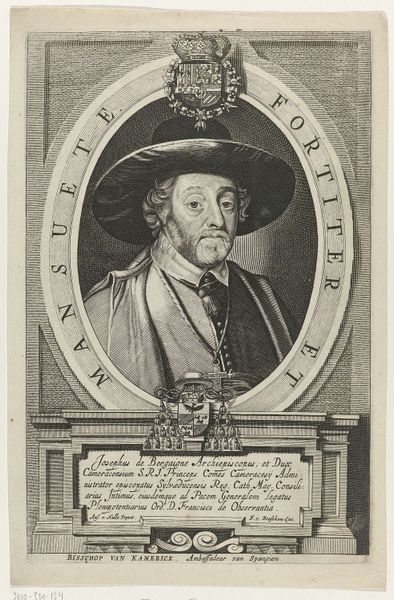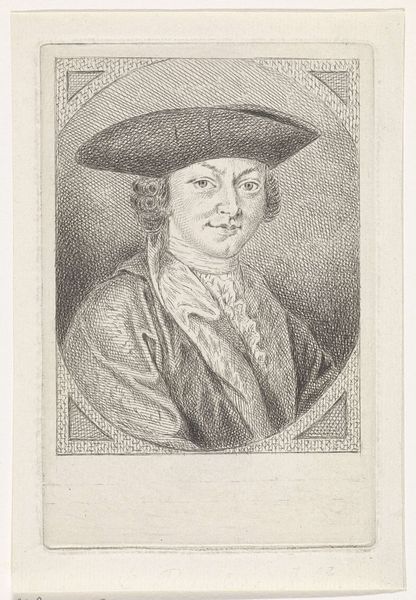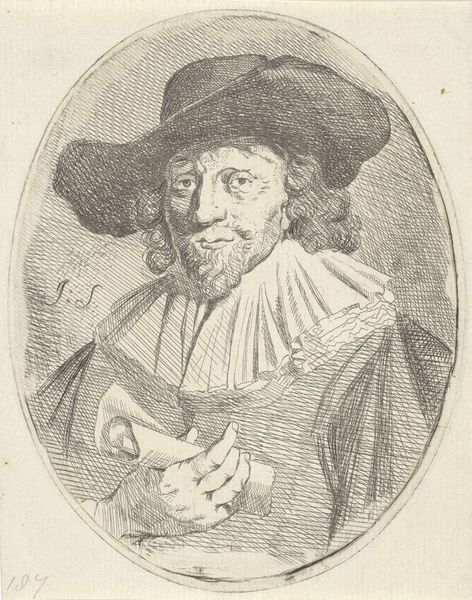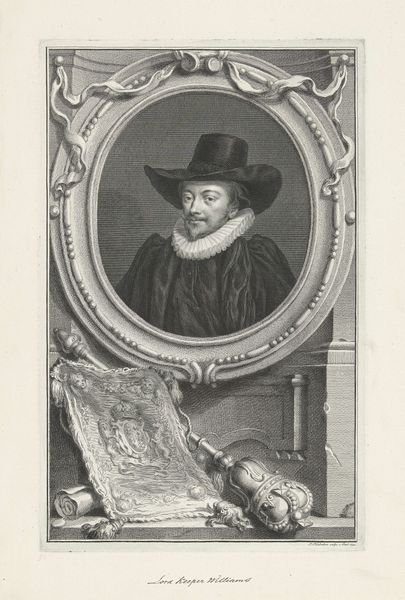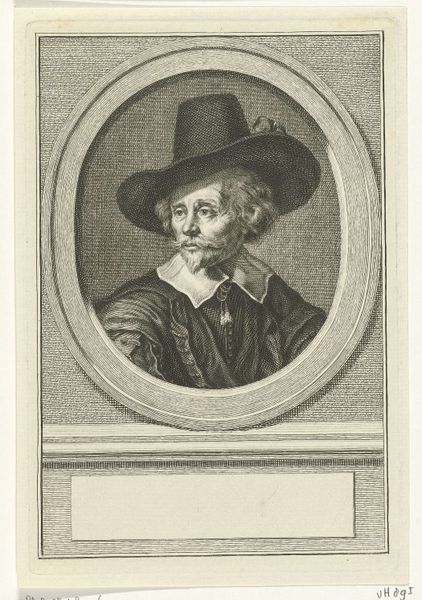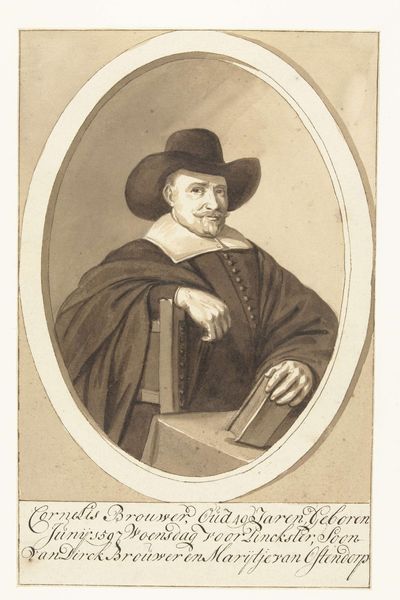
engraving
#
portrait
#
dutch-golden-age
#
caricature
#
history-painting
#
engraving
Dimensions: height 312 mm, width 245 mm
Copyright: Rijks Museum: Open Domain
Theodor Matham created this print of Reinier Pauw, a member of the Dutch elite, in the 17th century. This portrait provides a window into the hierarchical society of the Dutch Republic. Pauw’s clothing signifies his social standing: the expensive fur, the wide-brimmed hat, and the ornate chair all speak to his wealth and status. The gesture of his hand, pointing outwards, suggests authority. The Dutch Republic was governed by regents like Pauw, who came from a small group of wealthy merchant families. By the 17th century, they had consolidated their power, forming a kind of oligarchy. This print can be seen as a symbol of that power, reinforcing the social hierarchy of the time. To fully understand this image, we need to delve into the archives of the Dutch Republic, examining the social, political, and economic forces that shaped its society. This kind of research helps us to understand the complex relationship between art and power.
Comments
No comments
Be the first to comment and join the conversation on the ultimate creative platform.
